Unpretentious flowering indoor plants: a review of the best
Flowers decorate our home, cleanse the air of harmful substances, make it cozy. Flowering plants are especially pleasing to the eye. But some of them require increased attention, and at the slightest violation of the care regime, they lose their decorative effect, or even completely die. Growing unpretentious flowering plants can be a good solution to the problem.
Content:
Benefits and types
Now more and more various outlandish plants come to us. Some of them require special care, which is fundamentally different from the usual procedures. Some need to be sprayed with warm water several times a day, others need additional lighting for good flowering and development. phytolamps.
Some will not bloom without constant feeding, require special soil quality, installation on a south window, shading from bright sunlight or protection from drafts.
As a result, the often acquired flowering plants do not please the owners for long. They begin to lose leaves, stop forming buds. This happens especially often after transplanting store-bought flowers into a new pot. Sometimes such plants disappear completely in just a few days. As a result, instead of joy, the owners receive only grief.
And if the owners often leave home, then problems can arise with ordinary watering. But you don't want to be left completely without flowers either. In this case, you need to pay attention to unpretentious flowering indoor plants. Most of them are well known to everyone, some are undeservedly forgotten:
Hoya carnosa
This plant is better known as wax ivy. This is a beautiful ampelous plant that is usually grown by directing the branches of the vines vertically upwards. To do this, use a strong ladder or strong thread.
Features of the structure:
- The scourge of the plant is long, can grow up to several meters.
- Leaves are elliptical, dense, leathery, as if covered with a waxy coating. They are located opposite.
- The color is dark green, with barely noticeable small light specks.
The plant is beautiful even when not blooming. But during the flowering period, it is covered with bouquets of star-shaped flowers with a red center. They also look like wax. The flowers themselves are most often white, but can be beige or pink. One umbellate inflorescence of flowers can be from 10 to 20 pieces.
Hoya's dense leaves accumulate moisture, which can be used during dry periods when the plant is not watered.
Therefore, it can be left in the apartment even for a couple of months. The plant responds well to spraying, but it looks good without it. For a long time, it can do without feeding.
The plant does not like frequent movements. Therefore, it is better to immediately install it on the western window. On the south, its leaves can dry out. You can even say that the less often you remember the plant, the longer it will live. Hoya propagated by cuttings. Part of the stem, with or without leaves, is placed in water. After a while, roots will appear on it.
Kalanchoe
Previously, in most apartments, the Kalanchoe Degremona was grown, all the leaves of which were periodically covered with small "children". With their help, this plant multiplied in all sorts of places. The sap of this plant was used to treat a cold. For this, a few drops were poured into the nose, after which they sneezed for a long time, getting rid of microbes.
Now, perhaps, everyone has forgotten about this plant. Flowering varieties have become popular kalanchoe... They do not have medicinal properties, but they bloom with beautiful flowers of different colors: beige, pink, purple. They can be simple or terry, from a distance they look like small roses. Flowering Kalanchoe species also have dense leathery leaves, but their shape is rounded, with wavy edges. The plant blooms in winter.
Care features:
- The plant should be installed in a well-lit place so that its stems do not stretch out. The south window will do as well. In winter, they are installed away from the battery or other heating devices. It is advisable to lower the temperature to 15 degrees.
- In the summer they watered once a week. Care must be taken so that moisture does not stagnate in the pot. Therefore, it is imperative to lay a drainage layer at the bottom of the pot. Roots can rot when wet. But even a strong drying out of the earthen coma can destroy the plant. Regular spraying is not needed for Kalanchoe. You can wipe the leaves with a damp cloth.
Flowering species of Kalanchoe reproduce most often cuttings... To do this, press the twig to the soil and fix it there. After a few days, roots will appear at the place where it touches the ground. Dividing the bush is rarely propagated, because it recovers poorly after this procedure. Can be grown from seed. In this case, flowering can occur in about a year. The plant does not like frequent transplants.
Abutilon
Indoor maple or abutilon is appreciated by flower growers for its ease of growing, beautiful bell flowers. They can be orange, pink, purple, white, beige. The length of each is from 4 cm. The flowers are single or grow in pairs, but do not bloom together. Each flower does not open for long, but soon the next bell opens nearby. Maple got its name from its leaves, which are very similar to the leaves of the Canadian maple. A large number of beautifully flowering abutilon hybrids have now been created.
The plant is grown as a tree or bush up to 2 m high.
An adult plant is placed on the floor, because it will not fit on the window. Shoots are brown, strong. Over time, they become lignified. The length of the leaves is about 10 cm. In the summer, abutilone is taken out into the fresh air or planted in the garden. But when transplanted into a pot in the fall, the plant usually loses a lot of leaves and takes a long time to recover. If not transplanted, it grows for about 5 years. Then it needs to be updated, that is, to grow a new tree, because the old one loses its appearance.
Abutilon cannot do without watering for a long time. Its thin, delicate leaves will fade. But after watering, they will restore turgor. In the summer he loves spraying. In winter, this procedure is usually not carried out, unless in a room with dry air. In summer, it must be installed in a place protected from strong winds so that it does not damage the thin branches of the plant. In the summer they are fed once a month with liquid fertilizer for flowering indoor flowers.
Fuchsia
Fuchsia Is a popular beautifully flowering plant. Its flowers of various colors are similar to a ballerina's tutu. They look like bells with beautiful bright sepals. This is a shrub. Over time, the lower part of its shoots is lignified.
How to properly care for a flower:
- The plant needs regular watering, but it carries dry air. This makes it possible to grow it in the conditions of city apartments or rooms with gas heating.
- In summer, fuchsia is installed away from direct sunlight, in winter it is transferred to a windowsill, where the temperature is lower than in the room. In summer, you can take it outside, balcony.
- Fuchsia reacts well to feeding, which can be carried out once a week. This increases the number of colors. But even without feeding, it looks good. If there is too much fertilizer, then leaves will grow, and there will be very few flowers.
- Fuchsia is transplanted when the pot becomes cramped for her. This will be evidenced by the roots that look out of the drainage hole.
- Fuchsia needs abundant watering, especially in summer. But you need to water only after the soil in the pot dries well.
- The plant is regularly pinched, thus forming its crown. This is done initially shortly after the plant has taken root. Then pinch the tips of the branches in the spring, before flowering. Lateral branches are pinched through 4 pairs of leaves.
Geranium
Geranium - a houseplant widely used for landscaping apartments. It is prized for its beautiful flowers. In addition, its leaves secrete useful phytoncides that purify the air in the room.
Features of the structure:
- Geranium is a perennial herb. The leaves are rounded, in different shades of green. Some species have dark stripes in a circle. They are covered with fine soft hairs. Petioles are long, thin.
- Stems are long, erect, can reach half a meter in length. They need to be pinched so that the plant does not stretch. Thus, a beautiful round-shaped bush is formed with a large number of flowers, usually collected in bouquets. There are beautiful ampelous views.
- Geranium colors are white and various shades of pink. There are bicolor hybrids. The size of the flower is up to 4 cm. The faded flowers are plucked if they are not going to propagate the geranium by seeds.
It is easier to get a new plant from a cuttings. They take root very easily. It is enough to cut a branch and place it in a glass with water. Its amount should not be large, because the roots are formed on the verge of air and water. Then the plant with roots is planted in a pot. You can cover it with a jar until it grows. It is better to renew the plant every year. In summer, it can be planted in open ground.
Balsam
Balsam - one of the most popular and long-known indoor plants for flower growers. It can grow in an apartment and on the street. There it is grown as an annual plant, which is propagated by seed. They winter well under the snow.
The advantage of balsam is abundant year-round flowering. There are about 400 species of this plant.
Care Tips:
- It grows well and blooms in the east and southeast window. It does not bloom on the northern window; on the southern window it quickly fades under the scorching rays of the sun. The balsam flowers, located between the two windows, are brighter than those that grow on the windows.
- Water the balsam every other day. Excess water goes into a sump, from which the plant can take moisture in between waterings. Therefore, it is better to take the pallet deeper. But there should be no stagnation of water in the pot, otherwise sciarids, small midges that harm the plant, can start in a coma of earth.
- In winter, the temperature should not drop below 12 ° C. Water it 2 times a week.
- Balsam is transplanted every 2 years. The amount of soil should not be large, because the plant blooms only when the root system completely fills the pot. You can grow balsams of various colors in one pot.
More information on how to properly care for Kalanchoe can be found in the video:



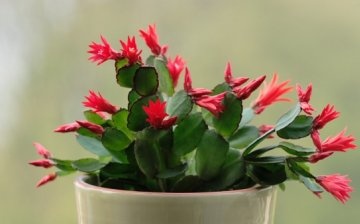



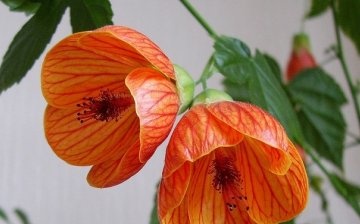
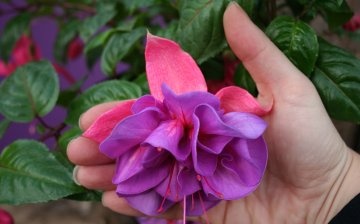
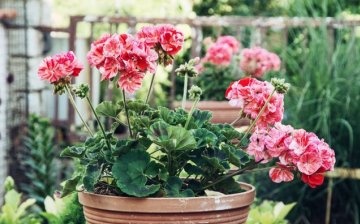









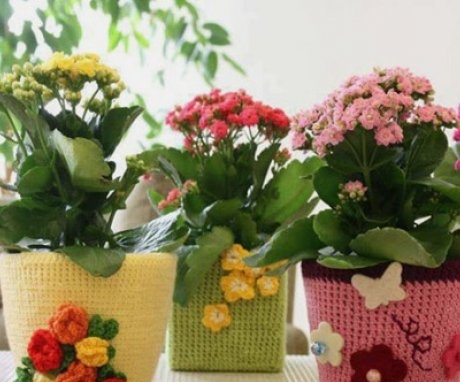
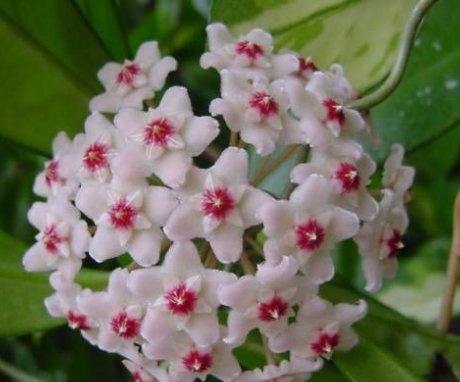
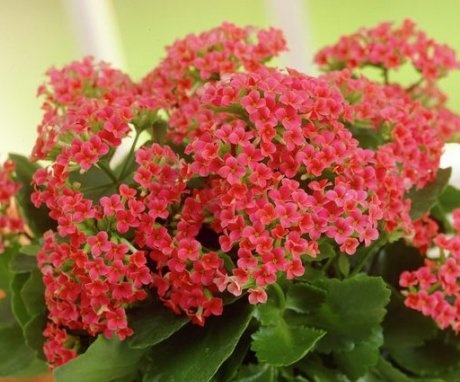
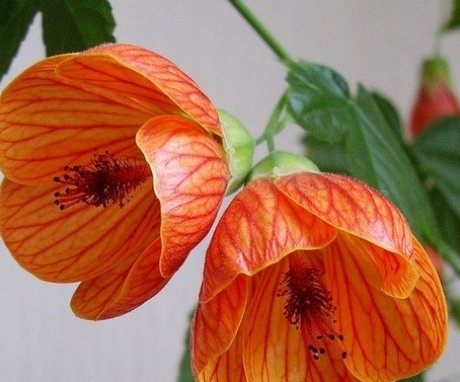

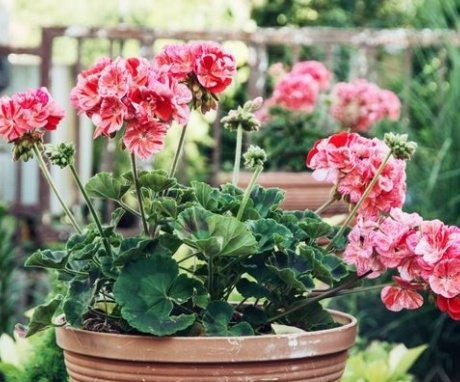
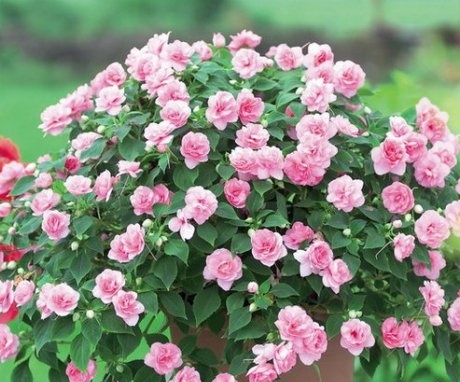
I would classify violets as unpretentious and often blooming, as much as they stand on the windowsill - they bloom so much. Yes, and spathiphyllum does not really require anything, the main thing is not in the open sun, otherwise the flower turns green. And I got rid of all the geraniums, I really don't like the smell of it :)
In the first photo of Schlumberger, there is a very beautiful flower, which always pleases with its flowering in the month of December, this is just a winter fairy tale and it requires minimal care, no more than the same geranium.